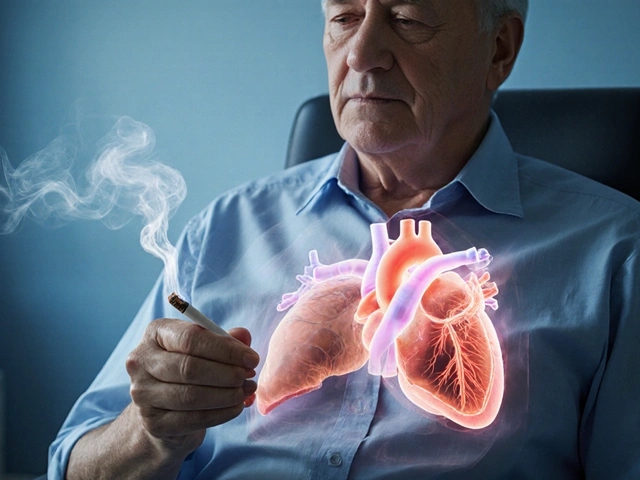Inhaler Overdose: What to Watch For and What to Do
Using a rescue inhaler more than prescribed can feel harmless at first, but too much of certain inhalers—especially fast-acting bronchodilators like albuterol (salbutamol)—can cause real problems. This page tells you how to spot an overdose, what to do right away, and simple steps to prevent it from happening again.
Symptoms to watch for
Symptoms usually start within minutes to a few hours after extra doses. Watch for: a racing or irregular heartbeat, strong tremors or shaking, feeling very anxious or restless, headache, dizziness, nausea, muscle cramps, and sometimes low potassium (which can increase weakness). In severe cases you might faint, have chest pain, or experience confusion or seizures. Kids can show the same signs but may get pale, weak, or unusually sleepy.
If you’re using an inhaled steroid and think you took too much, symptoms are usually less dramatic but may include throat irritation or, over long periods of misuse, increased risk of infections. Most urgent overdoses are from overusing short-acting bronchodilators (rescue inhalers).
Immediate steps and when to get help
Stop using the inhaler and sit down. Loosen tight clothes and try to stay calm—panic can make your heart beat faster. If you can, check the inhaler’s dose counter and keep the inhaler and packaging with you.
If symptoms are mild (mild tremor, slight fast heartbeat, mild nausea) call your local poison control center or contact your doctor for advice. If you feel chest pain, faint, have severe shortness of breath, an irregular heartbeat, loss of consciousness, or a seizure, call emergency services right away.
In an emergency, tell responders which inhaler you used and how many extra puffs you took. In the emergency department, treatment may include monitoring heart rhythm, IV fluids, electrolytes like potassium, and medicines to control symptoms. Don’t try home remedies like alcohol or unproven drugs.
Also note: needing your rescue inhaler more often than prescribed is a red flag for uncontrolled asthma or COPD. If you’re reaching for extra puffs regularly, make an appointment with your provider. You may need a controller medication, a change in your action plan, or a check of inhaler technique.
Preventing overdose is mostly practical: follow the prescribed dose, use a spacer if recommended (it helps deliver the right amount), keep track of doses with a counter or app, store inhalers out of children’s reach, and never take someone else’s inhaler. Avoid combining stimulants like high-dose decongestants or excessive caffeine when you’ve taken many bronchodilator puffs.
If you’re unsure what to do after taking extra puffs, contact your healthcare provider or local poison control. Quick action and a plan reduce risk and keep you safer with inhaler medicines.

How to manage a budesonide formoterol overdose
Experiencing a budesonide formoterol overdose can be quite scary, but it's important to remain calm and take the proper steps to manage the situation. First, I would immediately contact a healthcare professional or poison control center for guidance. Next, it's crucial to monitor my symptoms closely and seek emergency medical attention if necessary. I would also inform my healthcare provider about the overdose to discuss potential adjustments to my treatment plan. Lastly, I would focus on preventing future overdoses by carefully following the prescribed dosage instructions and storing the medication in a safe place.
Health and MedicineLatest Posts
Tags
- online pharmacy
- medication
- dietary supplement
- side effects
- online pharmacy UK
- mental health
- impact
- online pharmacies
- dosage
- medication safety
- skin health
- health
- pain relief
- dietary supplements
- massage therapy
- medication side effects
- eye inflammation
- health benefits
- mental health treatment
- thyroid medication




